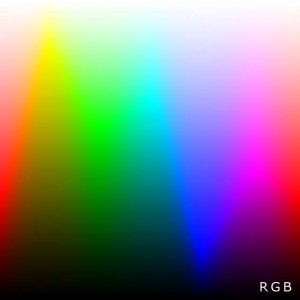A sensor is an electronic chip
A digital sensor is essentially an electronic “chip”, that has the particularity of being sensitive to light. The sensor plays the role previously assigned to photographic film, i.e. to capture the image. It does it, however, in an entirely different way compared to film. And thousands of times more efficiently too!
The sensor, generally rectangular in shape, is composed of a multitude of small cells, each capable of converting the light striking it into an electric charge.
The intensity of the charge varies depending on the intensity of light incident on the cell at the time of capturing the image, i.e. when the photographer presses the shutter button. And of course, also according to the image projected by the lens onto the sensor’s surface.
For each cell, this intensity is then read and converted to a digital value, value representing a gray tone within a predetermined level, usually between zero (pure black) to 255 (pure white).
Monochrome Picture
Basically, the sensor ONLY measures the intensity of light striking it, on each of its cells. It thus produces a monochrome, or grayscale if you prefer, image.
So how do we obtain a color image?
To obtain a color image from a monochrome sensor, the latter is covered with a matrix (a grid) of tiny color filters arranged in a very specific arrangement which is called a Bayer filter. Each of these filters is of either 3 primary color photography, either red, green and blue. They only let THAT light of the corresponding color and block everything else.

Click to enlarge: Greatly enlarged view of the color matrix on a photographic sensor. In fact, the cells in matrix are invisible to the naked eye.

Click to enlarge: Sensor covered with a Bayer grid of color filters. Each filter only allows light of it’s own color to pass down and reach the sensor’s surface.
Each sensor cell (also called photosite) ONLY measures light of a particular color. The other colors are filtered out (excluded).
Millions of colors
By combining the readings of three adjacent cells, one each for blue, red and green, a single RGB (Red, Green, Blue) value is obtained for the virtual “pixel” created by the merger of three distinct elements.
As each element has 256 possible values (between 0 and 255), this gives us 256 x 256 x 256 possible values, i.e. 16,777,216 possibilities! Each of these values represents a distinct color or tone.
Did you find this article interesting? Or that it is flawed in some way? Please let me know what you think below! Your comments are invaluable to me and will help me improve this site!
© Charles Martel 2015

